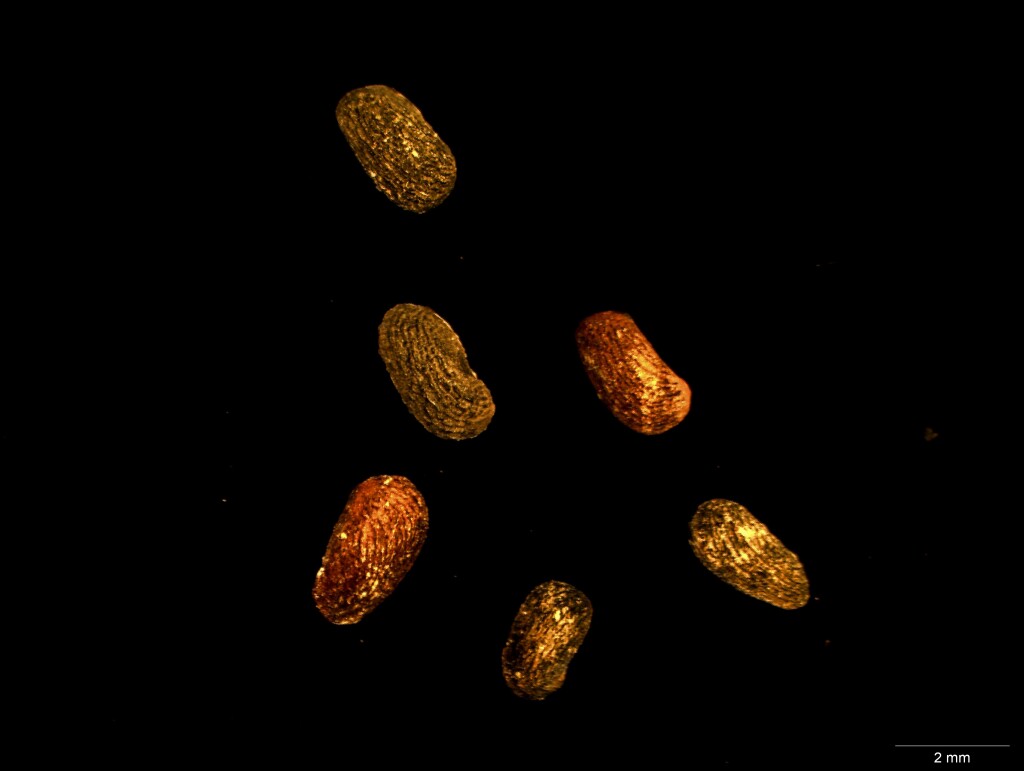Phebalium festivum
Paul G.Wilson Dainty PhebaliumShrub to 1.5 m high; branchlets smooth or rarely slightly glandular-verrucose, densely ferruginous-lepidote. Leaves broadly obovate, 2-3.5 mm long, 1.5-2.5 mm wide, apex rounded to truncate and retuse or obcordate, base cuneate, upper surface slightly convex and glandular-punctate, glabrous, midrib hardly impressed, lower surface densely silvery-lepidote, margin entire; petiole to 1 mm long. Inflorescence a 3-10-flowered umbel-like cluster, often on short lateral branches; peduncle absent; pedicels 2-3 mm long. Calyx hemispherical, 0.5-1 mm high, densely silvery- to ferruginous-lepidote, smooth; petals imbricate, elliptic, c. 2.5 mm long, white to pale yellow, silvery to ferruginous outside; stamens exserted, anthers yellow; disc not apparent; ovary silvery-lepidote. Follicles erect to spreading, lepidote, c. 3 mm long. Flowers spring and summer.
VRiv, Gold. Endemic in auriferous country in the Wedderburn, Inglewood, Dunolly, Rushworth and Bendigo areas (a 1928 collection purportedly from the Grampians is doubtful). Occurring in mallee and broombrush communities on shallow, shaley ground.
Formerly included in P. obcordatum Benth. which is endemic in New South Wales.
Duretto, M.F. (1999). Rutaceae. In: Walsh, N.G.; Entwisle, T.J., Flora of Victoria Vol. 4, Cornaceae to Asteraceae, pp. 153–197. Inkata Press, Melbourne.
 Spinning
Spinning
